Merlin
Allowing the Royal Navy to flex its airborne muscles, the versatile Merlins defend maritime forces (MK2) and empower the Royal Marines (MK4) for elevated missions.
Merlin helicopter
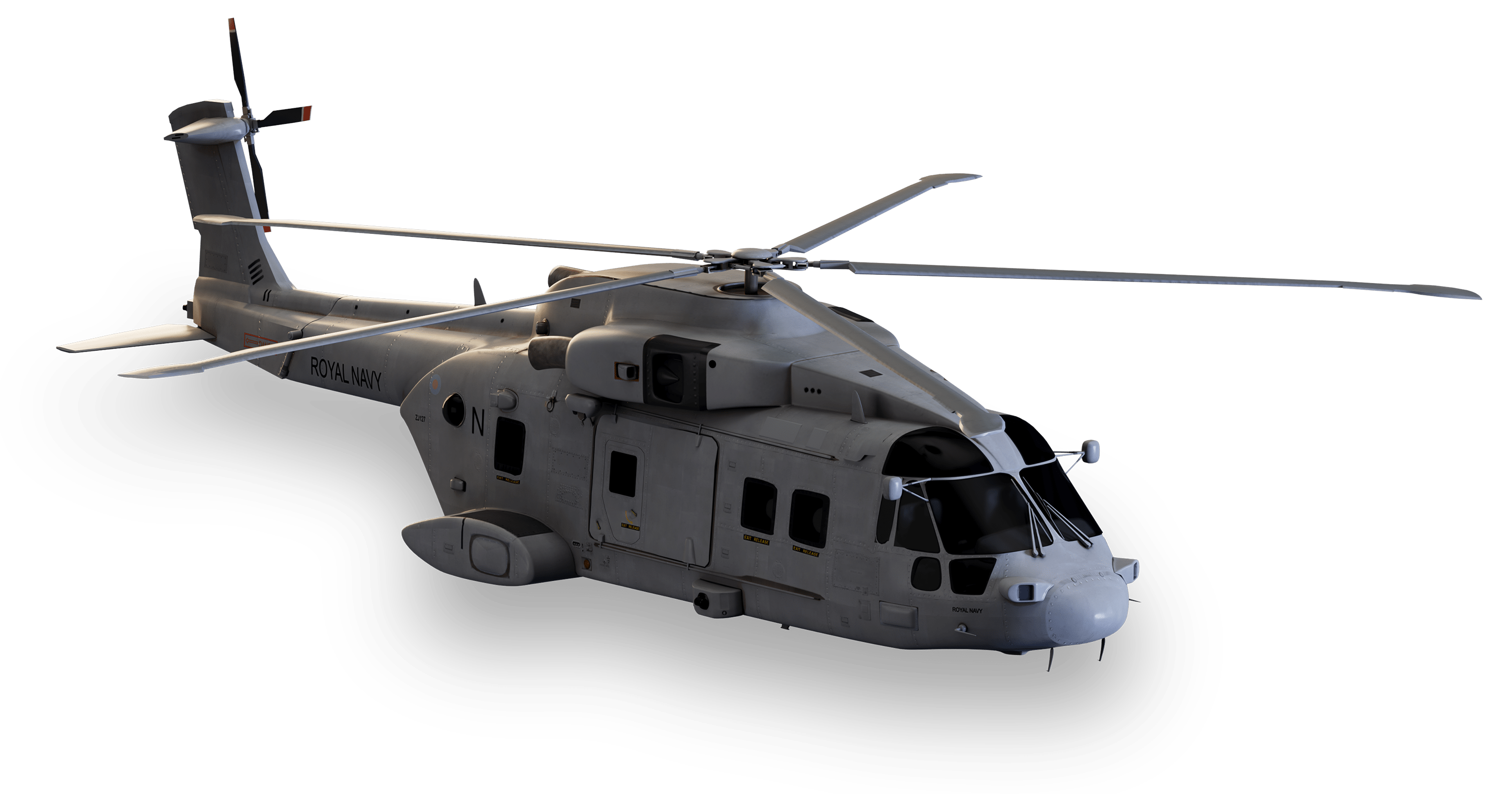
23 meters
3.8 tonnes
750 nautical miles
160 knots
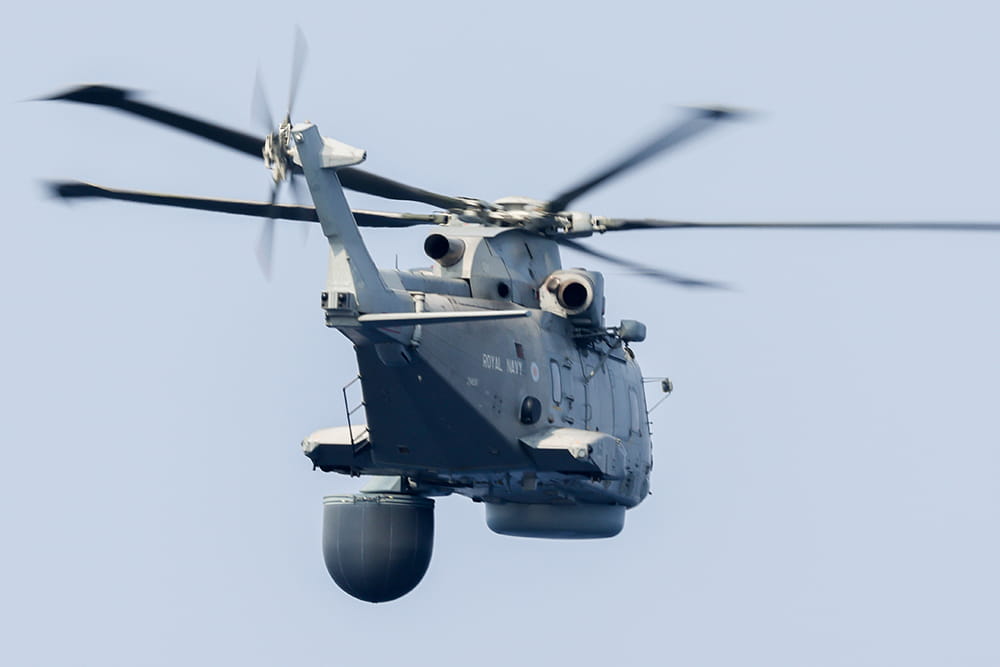
The ultimate sub-hunter

Commando deployer
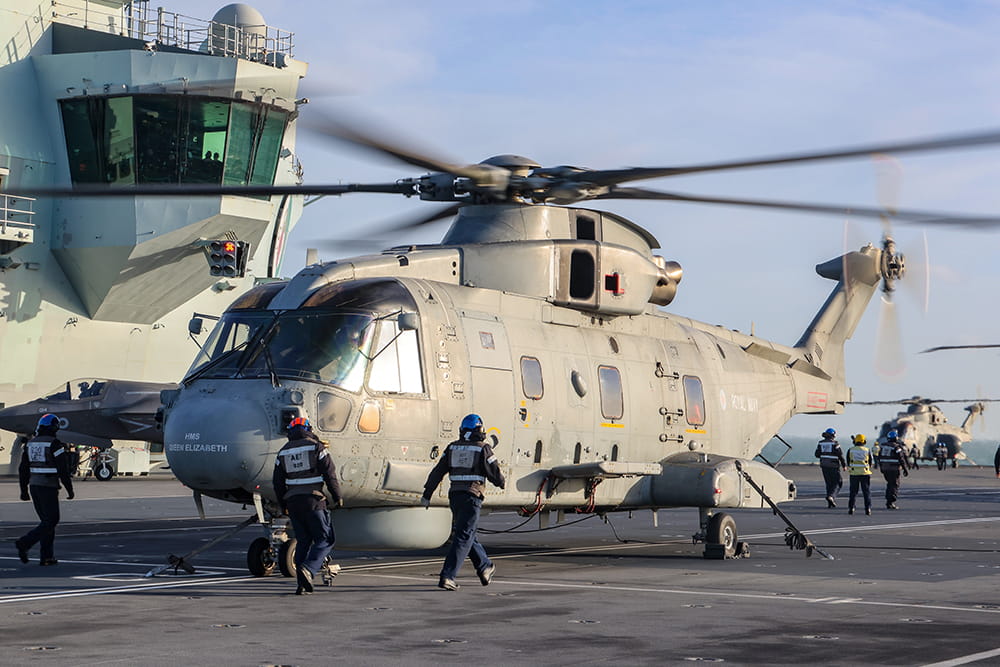
Muscle across the fleet
About the crew
Highly capable & technologically advanced
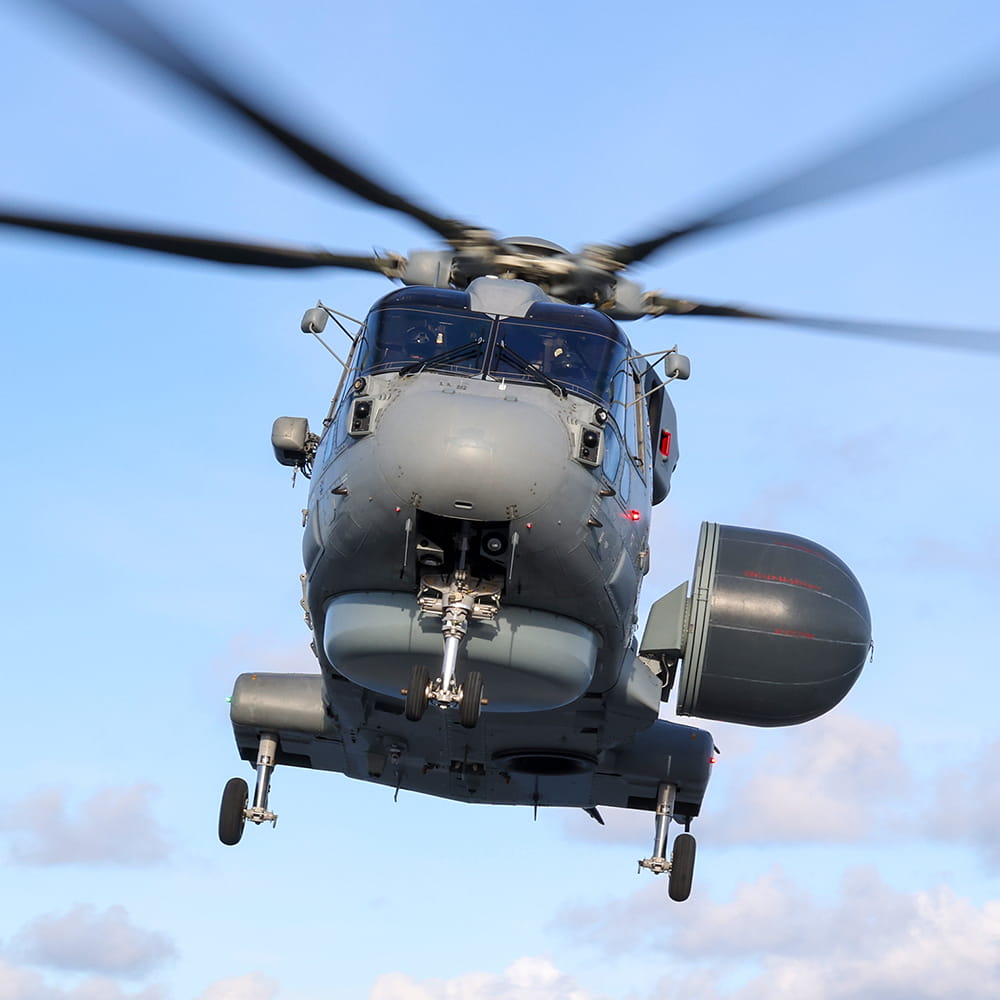
Crowsnest technology
Providing surveillance and intelligence for the entire Royal Navy fleet
Crowsnest provides a vital surveillance capability to support the Royal Navy’s Queen Elizabeth Class carriers. It uses a high power radar to provide long-range air, maritime and land-tracking capabilities to ensure the early detection of threats.
The distinctive-looking ‘bag’ containing the radar is attached to the fuselage by an arm and is lowered to a vertical position after take-off.
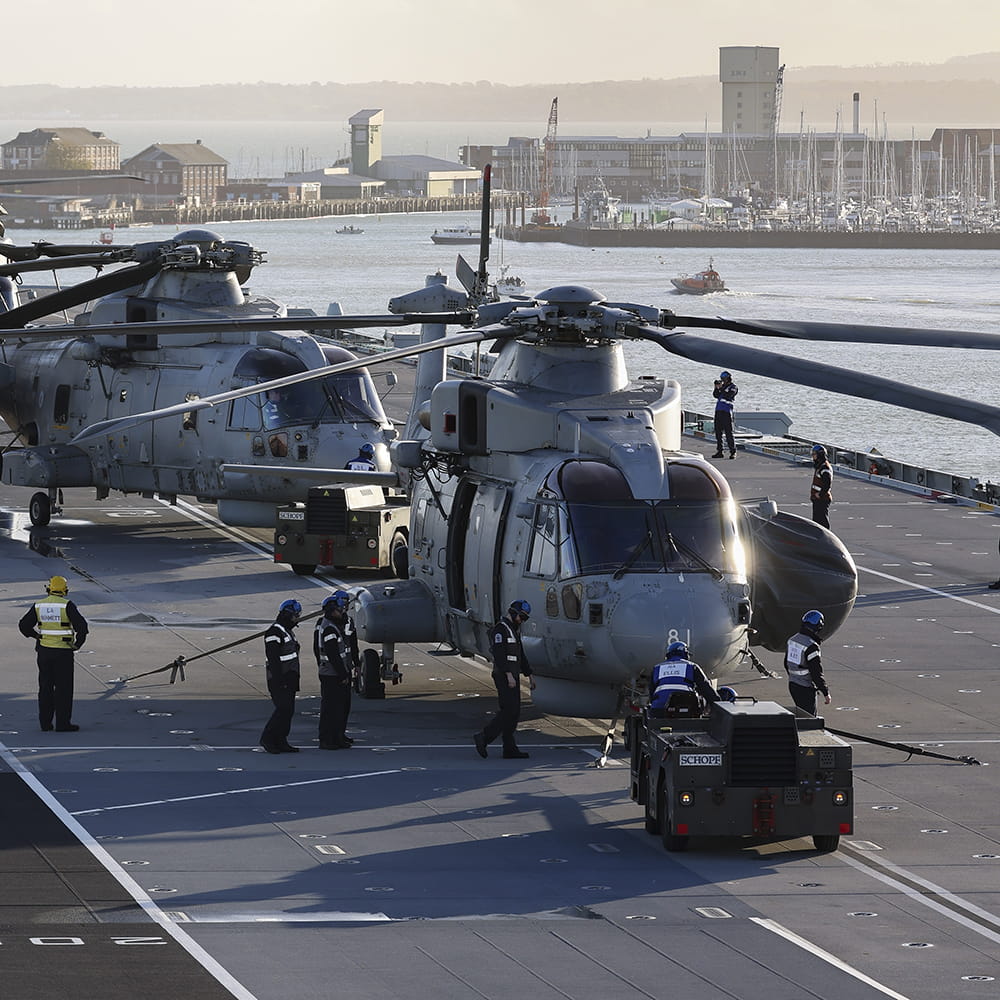
Protecting the aircraft
The Royal Navy uses protective covers to shield Merlin helicopters in extreme environments. Known as ‘Extreme Cold Weather covers’, or ‘onesies’, these sheets are spread over the critically important parts of the helicopters to guard them against harsh arctic, jungle or desert weather conditions.
The covers can be placed over the nose, cockpit, cabin, engine and rotor blades in under an hour to protect the helicopters from temperatures as low as -60 degrees Celsius or as high as 80 degrees Celsius.
Join the Fleet Air Arm
Ready to soar? You could be supporting, working on - or even flying - some of the world’s most advanced aircraft.